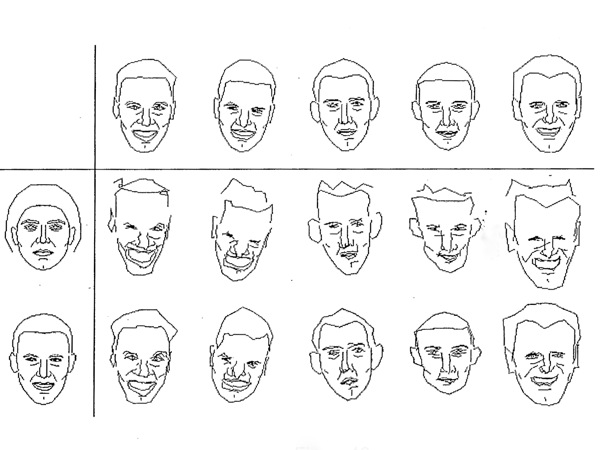Scalable Portraits
April 2005software, faces, perception, bt
software, faces, perception, bt

With a growing number of display devices of all shapes, used in many environments and contexts, media needs to be repurposed. Unfortunately standard repurposing techniques often render faces unrecognisable. Specifically, operation such as scaling and reductions in the colour palette, disproportionally impair face reading in contrast to other content. This analysis is supported by the Cognitive Psychology literature, from which we have drawn heavily.
Scalable Portraits are "smart" adaptable visual representations of individuals made optimally recognisable for the device, application and crowd in which they are shown. To accomplish this we have used techniques such as smart-scaling, caricature and automatic sketch generation. These have been verified with our own psychology experiments. This work is further described in: Making Recognisable Faces, FG 2006 [PDF].
We extended this work to consider the wider issues of "faces as content", looking at how mediation effects our reading of faces. Our position paper describes this work: Faces as Content, HCI and the Face - CHI2006 Workshop [PDF].
Scalable Portraits was a BT research project with Jeremy Thorne.